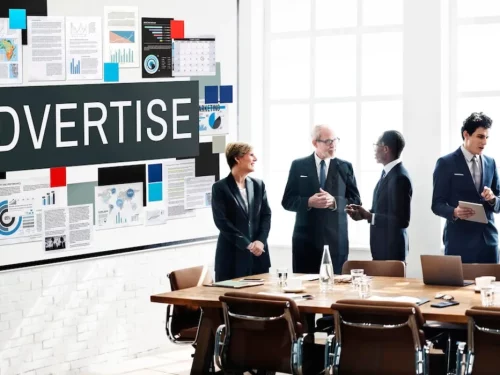
Microsoft Ads should already be on your radar if you’re serious about running profitable pay-per-click (PPC) campaigns in 2025. Often underestimated, this platform consistently proves its value by delivering highly targeted traffic at a competitive cost.
Whether focusing on B2B lead generation or scaling an e-commerce store, Microsoft Ads offers capabilities that can give you an edge.
- With 36% of the U.S. desktop search market on Bing, Microsoft Ads taps into an audience often overlooked by other platforms.
- Around 1.8 billion people worldwide visit Bing every month.
- The platform’s integration with LinkedIn allows advertisers to reach decision-makers and professionals precisely—a feature unmatched by competitors.
- Cost-per-click (CPC) on Microsoft Ads is often 30-50% lower than Google Ads, making it a cost-effective way to grow your business without compromising on quality traffic.
What’s in This Guide for You?
Here, you’ll find actionable insights and advanced strategies advertisers use to succeed. From setting up campaigns to mastering audience targeting and leveraging cutting-edge ad formats, this guide will help you:
- Understand the specific advantages Microsoft Ads brings to the table.
- Learn how to design campaigns that deliver measurable results.
- Implement advanced strategies and Bing PPC tips to stay ahead of the competition.
What Are Microsoft Ads?
Microsoft Ads is a PPC advertising platform that allows businesses to create highly targeted campaigns across Microsoft’s ecosystem of search engines, partner sites, and properties. Designed to drive traffic, generate leads, and increase sales, Microsoft Ads uses AI to ensure your message reaches the right audience at the right time.
Key Benefits of Microsoft Ads:
- Reach High-Intent Users: Display ads on Bing, Yahoo, AOL, and DuckDuckGo search results, capturing users actively searching for products or services.
- Advertise Across Microsoft Properties: Access premium placements on MSN, Outlook, and LinkedIn to connect with professional audiences.
- Diverse Ad Formats: Choose from text, image, shopping, and video ads to suit your campaign goals.
- AI-Driven Precision: Microsoft’s AI optimizes ad delivery, ensuring relevance and maximizing ROI.
Where Ads Appear:
- Search Engines: Target queries on Bing and partner sites.
- Microsoft-Owned Platforms: Build awareness with ads on MSN, LinkedIn, and Outlook.
- Native Partner Sites: Engage audiences with native ads on premium third-party sites.
Types of Microsoft Advertising Campaigns
Each campaign type offers unique benefits, allowing advertisers to connect with their audience through the most effective format.
1. Search Campaigns
These text-based ads appear on search engines like Bing, Yahoo, and AOL. Search campaigns are keyword-driven, meaning your ads appear when users in search queries type for specific terms related to your business.
- Best For: Capturing high-intent traffic from users actively searching for products or services.
- Key Feature: Customizable keywords, bidding strategies, and ad extensions to maximize visibility.
2. Shopping Campaigns
Designed for e-commerce businesses, shopping campaigns display product ads directly within search results. These ads include images, prices, and product descriptions, making them visually appealing and informative.
- Best For: Promoting individual products and driving sales.
- Key Feature: Integration with Microsoft Merchant Center for easy feed management.
3. Audience Ads
Native ads that appear on Microsoft’s Audience Network, including platforms like MSN, Outlook.com, and premium partner sites. These advertisements are more interesting and less obtrusive since they mix in perfectly with the content.
- Best For: Building brand awareness and engaging users who are in the research phase of their journey.
- Key Feature: Advanced audience targeting options, including in-market and remarketing segments.
4. Dynamic Search Ads
Dynamic search ads are automatically created based on the content of your website. Instead of targeting specific keywords, these ads match queries to your site’s content, ensuring relevance.
- Best For: Websites with a large catalog of products or services.
- Key Feature: Automatic generation of headlines and landing pages, saving time and effort.
5. Video Ads
Video ads are the latest addition to Microsoft Ads’ arsenal, enabling advertisers to captivate audiences with visually rich and engaging content. These advertisements are perfect for efficiently communicating complicated ideas and increasing brand awareness.
- Best For: Storytelling and capturing audience attention.
- Key Feature: Versatility across devices and premium placement options.
6. Microsoft Smart Campaigns
Smart campaigns leverage AI to simplify campaign management, making them ideal for small businesses or advertisers new to Microsoft Ads. The platform automatically optimizes targeting, bidding, and placements for the best results.
- Best For: Small businesses or advertisers with limited time and resources.
- Key Feature: Hands-free campaign optimization powered by AI.
How to Set Up Microsoft Ads?
To launch successful Microsoft Ads campaigns, you must first set up your account and properly configure your campaigns. Follow this step-by-step guide to get started:
1. Create a Microsoft Ads Account
Begin by visiting the Microsoft Advertising platform. Create an account with your business’s email address. If you already have campaigns on other platforms, such as Google Ads, you can easily import them to save time.
2. Define Your Advertising Goals
Choose the primary objective for your campaign. Microsoft Ads offers several options, including:
- Driving website traffic.
- Increasing online sales.
- Generating leads.
- Promoting products through Shopping Campaigns.
Selecting a clear goal ensures that the platform optimizes your campaign setup for the desired results.
3. Set Up Billing and Budget
Enter your payment information and decide on your budget. You can choose between:
- Daily Budget: Specify how much you want to spend each day.
- Monthly Budget: Set a total amount for the month to distribute across days.
Keep in mind that Microsoft Ads allows you to adjust budgets at any time, providing flexibility as your campaign progresses.
4. Select Your Campaign Type
Based on your objectives, select a campaign type. Here’s an overview to help you choose:
- Search Campaigns: Perfect for driving clicks from high-intent search traffic.
- Shopping Campaigns: Ideal for showcasing e-commerce products.
- Audience Ads: Designed for brand awareness and retargeting.
- Video Ads: Best for delivering visually rich messages.
5. Target Your Audience
Microsoft Ads offers advanced targeting options to refine your audience:
- Demographic Targeting: Adjust based on age, gender, income, or location.
- LinkedIn Profile Targeting: Use job titles, industries, or company sizes for precise B2B campaigns.
- Device Targeting: Choose whether to show ads on desktops, tablets, or mobile devices.
You can also layer targeting options, combining demographics with location or interests for maximum relevance.
6. Choose Keywords for Your Campaign
For Search and Shopping Campaigns, use the Microsoft Ads Keyword Planner to identify high-value keywords. Focus on:
- Relevant Keywords: Words and phrases your target audience searches for.
- Negative Keywords: Terms you want to exclude to avoid irrelevant clicks.
To increase Quality Scores and guarantee ad relevancy, arrange your keywords into ad groups that are closely related.
7. Create Engaging Ads
Create interesting ad copy that connects with your target demographic. Include:
- Headlines: Highlight key benefits or offers (e.g., “Save 20% on Your First Purchase!”).
- Descriptions: Provide a clear call-to-action (e.g., “Shop Now for Exclusive Deals”).
- Ad Extensions: Add site links, call buttons, or location details to increase engagement.
8. Review Campaign Settings
Before launching, double-check these critical settings:
- Geographic Targeting: Ensure your ads are shown in the right locations.
- Ad Scheduling: Choose certain times of day or days of the week for your ads to appear.
- Bidding Strategy: Select the bidding method that aligns with your goals, such as Enhanced CPC or Target CPA.
9. Launch and Monitor Your Campaign
Once you’ve reviewed everything, hit “Launch.” After your campaign goes live, monitor its performance regularly using Microsoft Ads’ built-in analytics tools. Focus on metrics like:
- Click-Through Rate (CTR).
- Cost-Per-Click (CPC).
- Conversion Rate.
Make adjustments to targeting, ad copy, or budgets as needed to optimize performance.
7 Microsoft Ads Strategies for Success in 2025
To succeed with Microsoft Ads, you must go beyond basic campaign setup. These five strategies, or say them as “Bing PPC tips”, will help you optimize your campaigns, engage the right audience, and maximize ROI.
1. Use AI to Scale and Automate Your Campaigns
Microsoft Ads offers powerful AI tools, like Copilot, to handle repetitive tasks and scale campaigns efficiently. From dynamic ad creation to real-time bidding adjustments, AI allows you to focus on strategy while automation drives results.
How to Implement:
- Enable AI recommendations to refine your bids and ad placements automatically.
- Use Dynamic Search Ads (DSAs) to create ads directly from your website’s content, ensuring relevance and saving time.
- Experiment with Microsoft’s Smart Campaigns for automated campaign management.
Why It Works: AI ensures your campaigns stay competitive by adapting to real-time performance data faster than manual adjustments.
2. Leverage LinkedIn Targeting for Precision Advertising
Microsoft’s integration with LinkedIn offers unique opportunities to target professional audiences. This feature is especially valuable for B2B businesses looking to connect with decision-makers.
How to Implement:
- Use LinkedIn attributes like job title, industry, or company size to create hyper-targeted campaigns.
- Layer LinkedIn data with demographic targeting (e.g., age, location) for even greater relevance.
- Run split tests to identify the best-performing segments.
Why It Works: LinkedIn’s professional data enables you to craft messages that resonate directly with your ideal customer personas.
3. Optimize Ad Copy and Creatives for Maximum Engagement
Even the best targeting falls short if your ads don’t capture attention. Microsoft Ads’ responsive search ads and video formats give you the flexibility to test and refine your creative approach.
How to Implement:
- Write compelling headlines that highlight benefits or urgency (e.g., “Limited Time Offer: Save 30% Today!”).
- Use ad extensions (e.g., sitelinks, call buttons) to provide additional ways for users to interact with your ad.
- Experiment with video ads to create more engaging and memorable content, particularly on the Microsoft Audience Network.
Why It Works: High-quality creatives drive clicks and improve Quality Scores, ultimately lowering your cost-per-click.
4. Prioritize Shopping Campaigns for E-Commerce Growth
Microsoft Shopping Campaigns are essential for e-commerce brands. By showcasing products directly in search results with images and prices, these campaigns attract high-intent buyers.
How to Implement:
- Use Microsoft Merchant Center to upload accurate and optimized product feeds.
- Improve exposure by optimizing product titles and descriptions using relevant keywords.
- Monitor product-level performance and adjust bids for top-performing items.
Why It Works: Shopping ads provide the information users need to make purchase decisions instantly, driving higher conversion rates.
5. Adapt to Conversational and Voice Search Trends
As voice search grows, users are shifting toward conversational queries. Optimizing your campaigns for natural language helps capture this evolving audience behavior.
How to Implement:
- Target long-tail keywords that mimic how people speak (e.g., “Best shoes for running near me”).
- Use question-based phrases in your ad copy to align with common voice search queries.
- Optimize landing pages for fast loading times and mobile responsiveness, as most voice searches occur on mobile devices.
Why It Works: Voice search queries often signal high purchase intent, making them valuable for driving conversions.
6. Focus on First-Party Data for Targeting
With privacy regulations evolving, first-party data is becoming a cornerstone of effective advertising. Microsoft Ads allows you to use your customer data to create personalized campaigns.
How to Implement:
- Use Customer Match to target ads based on your existing customer database.
- Combine first-party data with in-market audiences to expand reach while maintaining relevance.
- Create lookalike audiences to target visitors that are similar to your best customers.
Why It Works: First-party data ensures compliance with privacy laws while delivering highly relevant ads to your ideal audience.
7. Use Smart Bidding for Budget Optimization
AI-driven bidding strategies allow you to maximize performance without micromanaging your campaigns. Microsoft Ads offers several smart bidding options to align with your goals.
How to Implement:
- Use Target CPA (Cost Per Acquisition) to control costs while optimizing for conversions.
- Experiment with Target ROAS (Return on Ad Spend) for revenue-focused campaigns.
- Monitor performance and adjust goals as needed for better results.
Why It Works: Smart bidding saves time while ensuring your budget is spent on the clicks most likely to convert.
Mistakes You Should Avoid in Microsoft AdWords Campaigns
Even experienced marketers can fall into traps that impact the success of their Microsoft AdWords campaigns. Avoid these advanced yet critical mistakes to maximize your ROI:
1. Misinterpreting AI-Driven Recommendations
Microsoft Ads provides automated recommendations, but accepting them without analysis can lead to suboptimal results. For instance, suggestions to increase budgets or add broad-match keywords may prioritize spending over conversions.
How to Avoid:
- Evaluate recommendations against your campaign goals before implementing them.
- Test changes on a small scale to ensure they improve performance.
2. Overlooking Negative Keyword Conflicts
Adding too many negative keywords without proper testing can inadvertently block valuable traffic. This issue often arises when advertisers exclude terms broadly related to their niche.
How to Avoid:
- Regularly review the Search Term Report to identify keywords being incorrectly blocked.
- Use phrase match or exact match negative keywords instead of broad match to refine exclusions.
3. Ignoring Low-Performing Placements on the Audience Network
The Microsoft Audience Network is a great tool for extending reach, but it can also waste budget on underperforming sites if not monitored carefully.
How to Avoid:
- Use placement reports to identify low-performing websites and exclude them from your campaigns.
- Focus on premium placements that align with your brand’s values and audience.
4. Neglecting Bid Adjustments for High-Value Demographics
While demographic targeting is powerful, failing to adjust bids for specific age groups, income brackets, or devices can lead to missed opportunities or wasted budgets.
How to Avoid:
- Analyze performance by demographics and device type regularly.
- Increase bids for segments with higher conversion rates and reduce bids for those underperforming.
5. Running Ads 24/7 Without Scheduling
Not every hour of the day is equally valuable for conversions. Running ads around the clock can result in wasted spend during low-traffic or low-conversion periods.
How to Avoid:
- Prioritize the time when your target audience is most engaged and most likely to convert by using ad scheduling.
- Review performance data to identify peak hours and adjust your schedule accordingly.
Serious About MS Ads? – EvenDigit is Here.
Take control of your Microsoft Advertising campaigns with EvenDigit. Our PPC experts grow your revenue by aligning results with your budget, helping you surpass competitors, and boosting ad relevance with improved keyword quality scores.
We execute tailored, data-driven strategies that make every advertising dollar work harder. Let’s maximize your ROI—connect with us today and start seeing results.
EvenDigit
EvenDigit is an award-winning Digital Marketing agency, a brand owned by Softude (formerly Systematix Infotech) – A CMMI Level 5 Company. Softude creates leading-edge digital transformation solutions to help domain-leading businesses and innovative startups deliver to excel.
We are a team of 70+ enthusiastic millennials who are experienced, result-driven, and hard-wired digital marketers, and that collectively makes us EvenDigit. Read More




